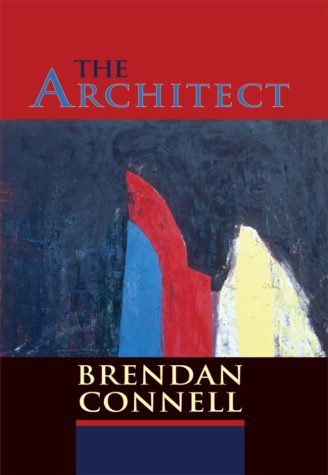 By BRENDAN CONNELL (PS Publishing; 2012)
By BRENDAN CONNELL (PS Publishing; 2012)
Of the handful of books I’ve read by Brendan Connell this fast moving novella is the most accessible. Unfortunately it’s also the most problematic.
Dispensing with the experimental wordplay and freeform narratives of much of the rest of Connell’s output (DR. BLACK AND THE GUERRILLIA, MISS HOMICIDE PLAYS THE FLUTE, UNPLEASANT TALES, etc.), THE ARCHITECT relates a straightforward (if bizarre) account of the construction of “an edifice such as the world had never known…a nightmare harnessed and dragged into the physical world.” The financier of this monstrosity is a mystical sect known as the Körn Society, whose leaders are looking to construct a special meeting place. The eccentric visionary Alexius Nachtman is chosen to design the building, a choice that proves disastrous for all concerned.
The construction of this edifice goes of out of control almost immediately. Several workers are killed trying to realize Nachtman’s insane designs, which grow increasingly extravagant as construction advances. Before long the Körn Society is forced to recruit its own members as workmen on the project—and when money for building materials runs low the bodies of Körn adherents are used to make bricks, just as the statues and gargoyles set to line the building are created from the corpses of Nachtman’s enemies.
In the meantime Nachtman embarks on an increasingly perverse affair with a Körn Society higher-up, one Maria Venezuela, who’s described thusly: “Though not pretty, she was beautiful, just as certain liquors are not pleasant to drink but none the less produce strong intoxication.”
All this is related in richly ornate old world prose of the type Brendan Connell does better than just about anyone else, giving it the feel of a relic from some past age. For the most part it works, with a strong narrative drive and a great deal of macabre grotesquerie.
Where THE ARCHITECT falls apart (literally and figuratively) is in the end, which takes place on the final day of the monstrous structure’s construction, with one last stone needing to be set in place. Predicting what happens when that stone is finally set isn’t exactly difficult. Worse, the resulting description feels rushed and perfunctory, especially in light of the richness of the rest of the book. Then again, though, coming after so much demented opulence I guess any ending would feel inadequate.
